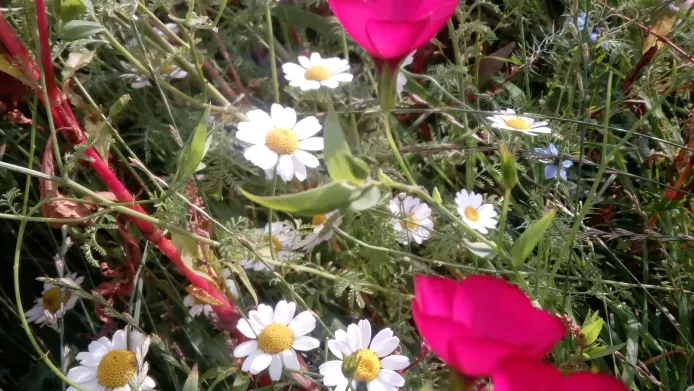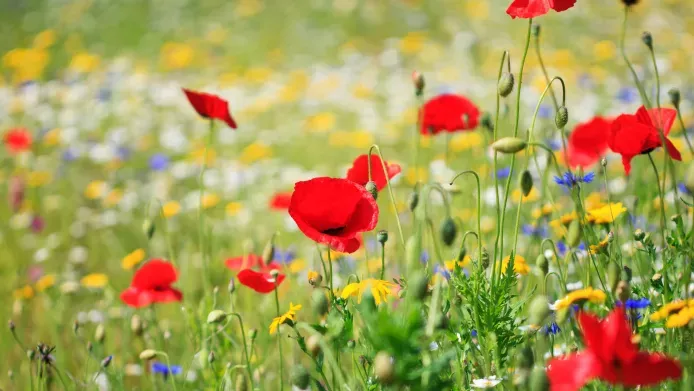Dydd Gwyl Dewi Hapus, Grow Wilders! Happy St David's Day!
It's common knowledge that, along with the leek and dragon, daffodils are the quintessential symbol of Wales. What can be tricky is telling UK native daffodils apart from from each other and which one is the true Welsh symbol?
While there are 36 species of daffodil, their popularity as an ornamental plant has led to the creation of over 26,000 cultivated varieties.
If you're 100 per cent confident that you already know the difference, then you might not want to read any further – get back to eating your rarebit and Welsh cakes! However, if you're anything like the rest of us you might want to test yourself by answering the following question: which of these is an authentic UK native wild daffodil?
A:
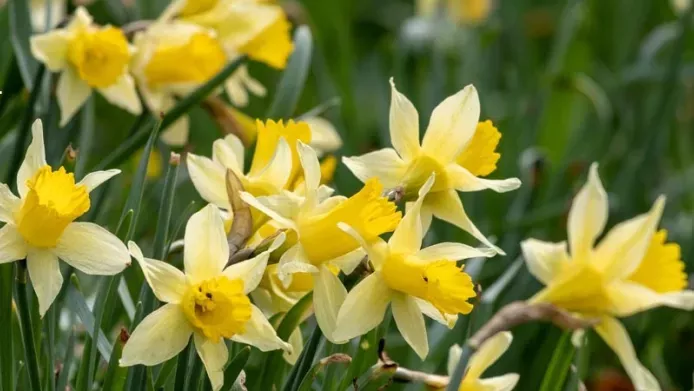
B:
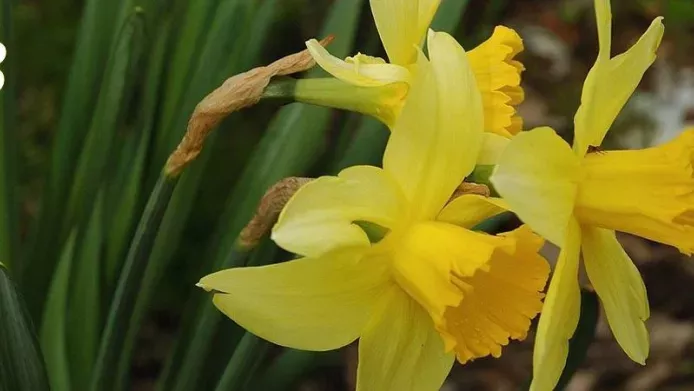
C:
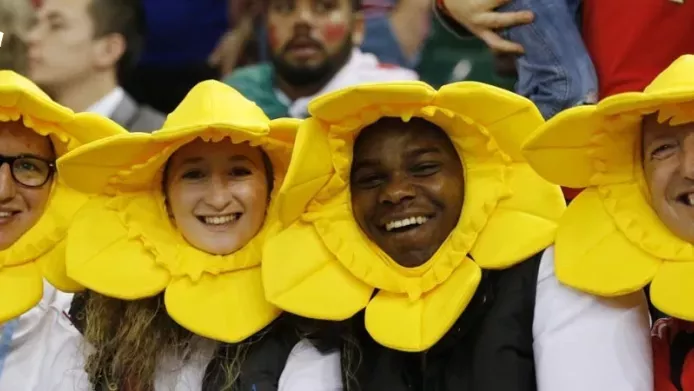
If you answered 'A', congratulations – that's Narcissus pseudonarcissus, a UK native daffodil and Welsh icon. As well as having a storied history and a unique place in the hearts and minds of people from the UK, this delightful daff can be easily identified when compared to its close relatives once you know how.
So what do you mean by 'wild daffodil'?

Wild daffodils, Narcissus pseudonarcissus
There’s nothing quite like coming across the distinctive yellow blooms of a clump of wild daffodils on an early spring day.
Wild daffodils (Narcissus pseudonarcissus) – also commonly known as the Lent Lily, the Bell Rose, the Daffadowndilly and somewhat confusingly the Welsh daffodil– are native to the UK, although it’s not clear whether the species is a true British native or has been introduced to Britain.
These popular wildflowers were once a very common sight in England and Wales, though they rapidly declined in the mid-19th century, partly due to habitat loss. Today they are considered rare in some areas.
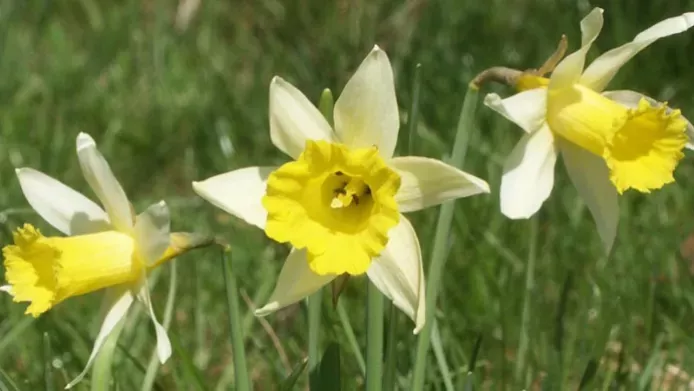
Wild daffodils, Narcissus pseudonarcissus
How to identify a wild daffodil
Wild daffodils (Narcissus pseudonarcissus) can be identified by their six pale yellow petals, which tend to be thinner and have more of a teardrop profile than other daffodils', as well as a vibrant yellow trumpet in the centre.
Wild daffodils tend to be smaller than commercial varieties of daffodil, growing up to 35 cm tall and with flowers between 4 and 6 cm in diameter, as opposed to the teabag-sized whoppers most of us are used to. They're not only found in Wales, but across Western Europe.
How did daffodils come to symbolise Wales?
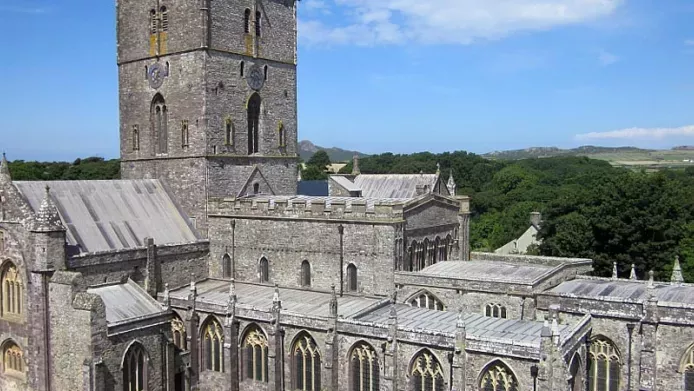
The daffodil is the national flower of Wales and is traditionally worn on St David’s Day, which celebrates Wales’ patron saint, David (Dewi sant in Welsh), on 1 March every year.
David lived in the sixth century and was known to have founded a large monastery in west Wales on the site of St David’s Cathedral (Ty Dewi).
Many people consider the traditional St David’s Day daffodil to specifically be the Tenby daffodil (N. pseudonarcissus subspecies major, also known by the synonym N. obvallaris), which grows wild in South Wales predominantly. Unlike the common N. pseudonarcissus variety, the Tenby daffodil has small, uniformly yellow flowers and short stiff stems (pictured below).
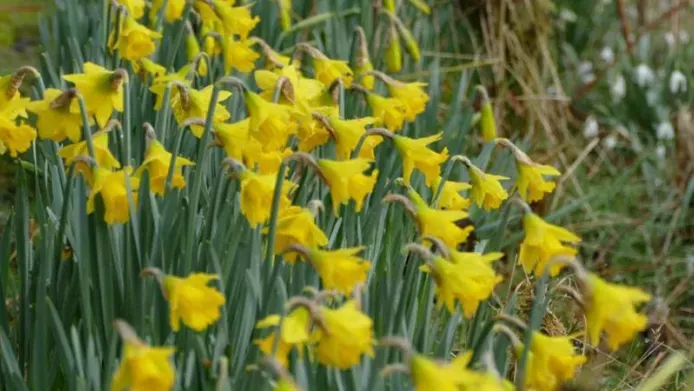
Tenby daffodils, Narcissus obvallaris
The daffodil is thought to have been a symbol of Wales since the 19th century. The flower conveniently tends to be in bloom around early March, the time of St David’s Day. But some believe the popularity of the flower may have come from its Welsh name, cenhinen Bedr, meaning 'Peter's leek'.
There is much more historical precedent for wearing a leek on St David's Day, as records detailing this go back to the 6th century. According to folklore, St David himself ordered Welsh soldiers to wear leeks into battle against the much-hated Saxons, and in the 14th century Welsh archers decked themselves out in green and white leek-themed uniforms.
Another theory for the popularity of daffodils is that wearing the flower on St David’s Day was popularised by the Welsh-born Prime Minister David Lloyd George. It's a lot more vibrant and a bit less smelly than a leek – as great as they are in a soup, they don't make quite so striking a buttonhole as the cheeky yellow daffodil.
If you're determined to be loyal to leeks, you could stage a leek eating competition like these Royal Welsh soldiers (below) did in 1969. Yum!

Whatever the reason, the daffodil remains a potent symbol of rebirth and new beginnings – its cheery blooms are a sign of nature’s optimism, heralding spring. Traditionally, it has represented hope, folly and unrequited love, feelings that we're sure some of you reading this might have attached to the Welsh football and rugby teams some years!
However you celebrate, why not show the UK native daffodils some St David's Day love and plant a few bulbs? They won't flower this year, but you're nearly guaranteed a shock of festive yellow blooms next year – daffodils are notoriously resilient and dependable, as well as being stunning.
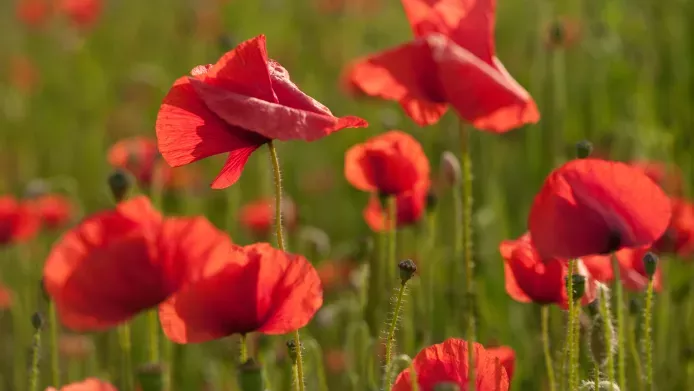
Wildflowers
